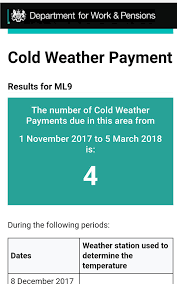What You Need to Know About Cold Weather Payments

Importance of Cold Weather Payments
In the UK, cold weather payments play a crucial role in supporting vulnerable households during periods of extreme cold. As temperatures drop, the risk of hypothermia and related health issues rises, especially among the elderly and those with pre-existing conditions. This financial assistance helps ensure that those in need can afford to heat their homes adequately.
Eligibility Criteria
Cold weather payments are available to individuals on certain benefits, including Pension Credit, Income Support, and Universal Credit. To qualify, the temperature in the claimant’s area must be recorded as zero degrees Celsius or below for seven consecutive days. This year, the eligibility guidelines have been maintained, with payments set at £25 for each qualifying week.
Recent Developments
As of the winter of 2023, the UK has seen fluctuations in temperature, with several regions experiencing spells of extreme cold leading to increased applications for cold weather payments. The Department for Work and Pensions (DWP) reported that over 1.5 million payments were made last winter, and they anticipate numbers could be higher this year due to ongoing economic conditions and increased energy costs.
Accessing Cold Weather Payments
Claimants do not need to apply for cold weather payments separately; they will be automatically issued to those eligible. Payment is typically made directly into the bank account used for other benefits. It is imperative for claimants to ensure their contact details are up to date with the DWP to avoid missing out on vital aid.
Conclusion
Cold weather payments are a critical element of the social safety net for vulnerable groups in the UK during the winter months. As temperatures fluctuate and the cost of living continues to rise, the importance of this financial support cannot be understated. Residents are encouraged to stay informed about their eligibility to ensure they receive the assistance they require. The ongoing commitment from the DWP to maintain these payments reflects a broader strategy to protect the most at-risk populations amid challenging circumstances.









